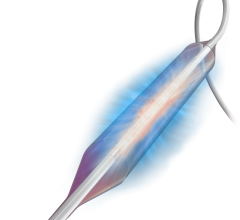July 30, 2008 - The American Venous Forum’s National Venous Screening Program (NVSP), having finished its second year (November 2006 to the beginning of 2007), reported an increase in participation from 17 to 83 medical centers and 476 to 2,234 individuals screened for blood clots in 40 states.
Respondents were screened as to their risk of developing a life-threatening blood clot in the veins (venous thromboembolism or VTE) if they were placed into a high-risk situations such as prolonged bed rest or major surgery. The American Venous Forum said a significant proportion of individuals were found to be at a high or a very high risk for developing VTE if placed in a high-risk situation.
Results of the expanded NVSP appeared in the August issue of the Journal of Vascular Surgery, the official journal of the Society for Vascular Surgery. The data and results were first presented at the Annual Meeting of the Society for Vascular Surgery in June of 2007 in Baltimore, MD.
Screenings included a demographic questionnaire, VTE risk assessment, duplex ultrasound exam for venous reflux and obstruction and an exam of the lower extremities. Participants were 80 percent Caucasian; 77 percent female (possibly because there is a higher incidence of varicose veins in this population and women have increased use of healthcare facilities); 44 percent overweight; and had a mean age of 60 years. Ten percent had diabetes mellitus, 34 percent had hypertension and 40 percent were past or current smokers.
New this year was a validated chronic venous insufficiency quality of life questionnaire, which addressed pain repercussions, physical functioning and social activities. Results showed significantly more obstruction in minorities (as a whole) than Caucasians (9 percent vs. 4 percent); and African-Americans had significantly worse scores in the venous quality of life questionnaire.
Percentages of those at risk of a blood clots were 40 percent, low; 22 percent, moderate; 21 percent, high; and 17 percent, very high. Thirty-seven percent had at least one vein segment in a lower extremity with abnormal backflow and nearly 1 in 5 individuals had serious changes on their lower legs indicative of severe chronic vein dysfunction.
“The importance of these findings cannot be over emphasized, considering that more people die from venous clots to the lungs than heart attacks or strokes,” said Robert B. McLafferty, M.D., co-chairperson of the National Venous Screening Committee American Venous Forum and professor of vascular surgery at the Southern Illinois University School of Medicine in Springfield, IL.
Sixty percent came to the screening because it was free; 42 percent due to varicose veins; 35 percent had leg pain; 7 percent believed they had a blood clot; and 6 percent had a cosmetic problem. Participants received educational brochures, a monograph explaining their VTE risk assessment if they were placed in a high-risk situation and a report card about their results.
“By educating participants about their potential risk we empower them to impart this information to their physician who can then prescribe medications or treatments for deep vein thrombosis to prevent potential death and serious disability from acute and chronic vein disease,” Dr. McLafferty said.
He said the next phase of the NVSP should determine what course individuals follow after obtaining information from the screening and if they retain information about identification and risk of the disease process.
“This screened population was the first to sign a release allowing NVSP representatives to contact them for later follow-up,” said Dr. McLafferty. “The NVSP also may wish to add the venous clinical severity score and look for opportunities to work with hospital systems to foster more screening and physician education.”
For more information: www.jvascsurg.org, www.VascularWeb.org


 April 25, 2023
April 25, 2023 








